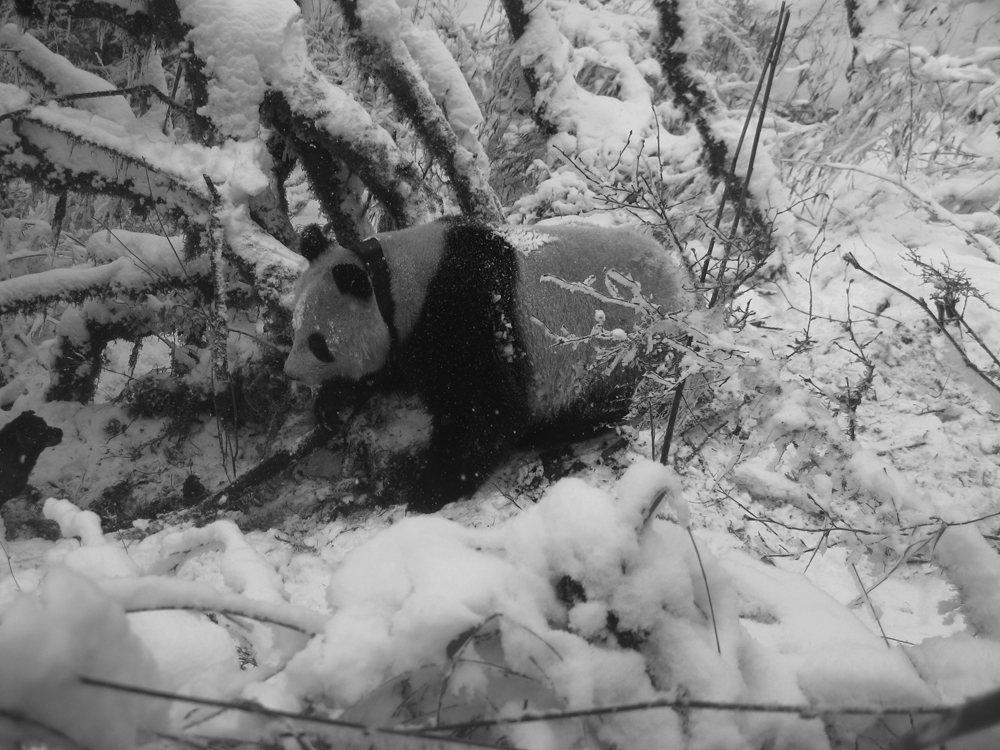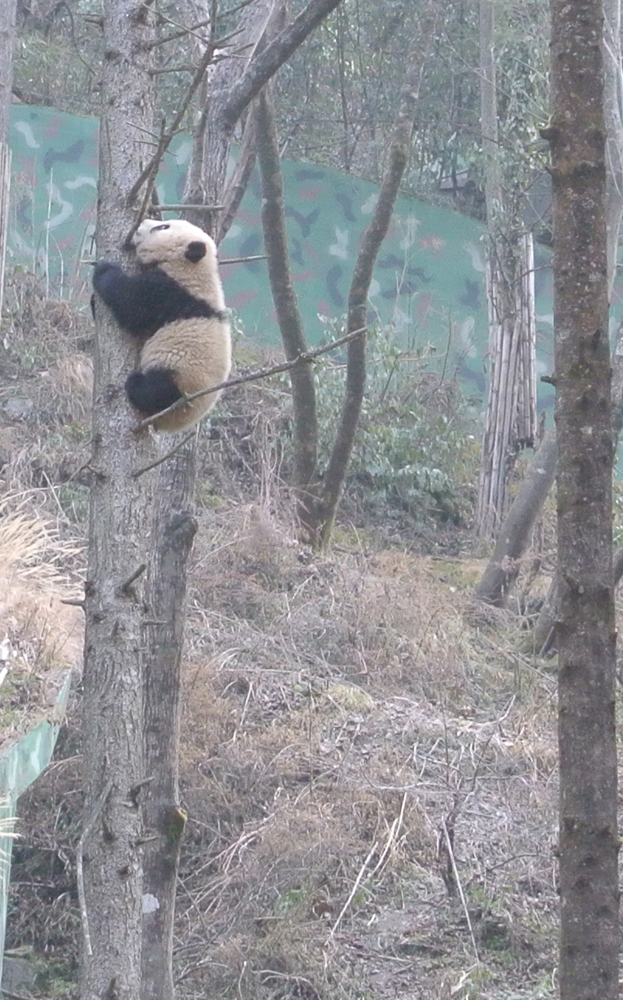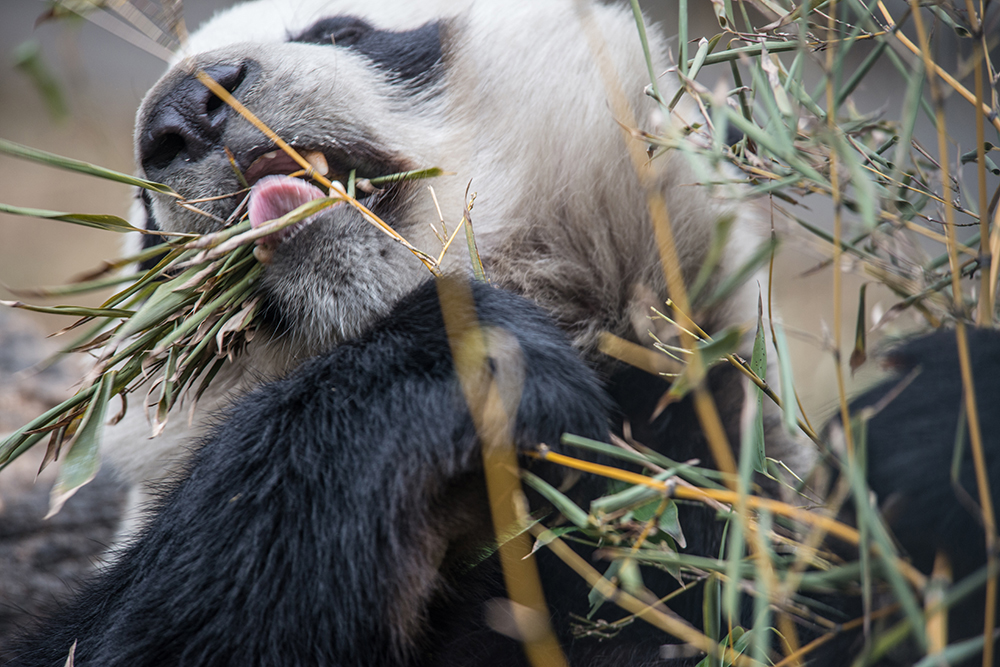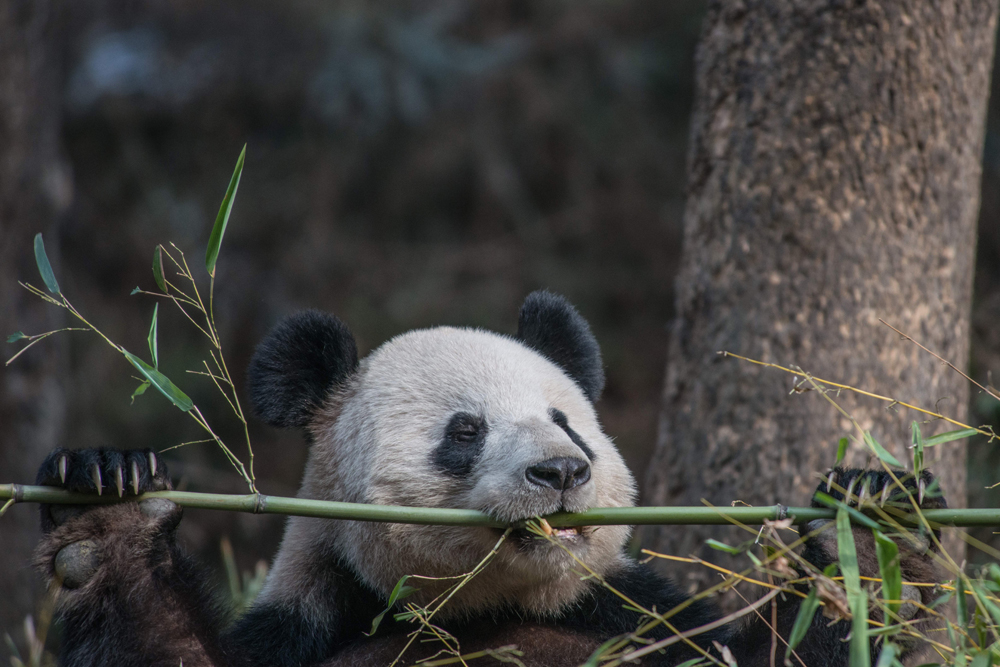
Pandas Show Resilience in Range of Habitats (Gallery)
Michigan State University contributed these images to Live Science's Expert Voices: Op-Ed & Insights.
While pandas have been intensively observed for at least three decades, some of the most prominent beliefs about the animals are more conventional wisdom than actual fact. Re-analyzing data from a wealth of panda studies, Michigan State University researchers now show pandas are more comfortable in a range of habitats than conservationists have feared, meaning even restored forests could soon welcome pandas back. Read more about the research in "Tao of Pandas: Sometimes They Go With the Flow" and see images from some of the studies below.
One subject of study

A panda wearing a GPS collar captured in a camera trap in Wolong Nature Reserve. (Credit: Sue Nichols, Michigan State University.)
Practice, practice, practice

A baby panda practices climbing in the Wolong Nature Reserve. (Credit: Sue Nichols, Michigan State University.)
Learning a useful skill
Sign up for the Live Science daily newsletter now
Get the world’s most fascinating discoveries delivered straight to your inbox.

Pandas learn to forage in their enclosures at the Wolong Nature Reserve. (Credit: Sue Nichols, Michigan State University.)
Snoozing

A napping panda at the Wolong National Nature Reserve in southwestern China. (Credit: Kurt Stepnitz, Michigan State University.)
Chowing down

A panda feeds on bamboo at the Wolong National Nature Reserve in southwestern China. (Credit: Kurt Stepnitz, Michigan State University.)
Pushing it

This panda at the Wolong National Nature Reserve in southwestern China looks ready for a workout. (Credit: Kurt Stepnitz, Michigan State University.)
Video of a munching panda in Wolong. (Credit: Sue Nichols, Michigan State University.)
Follow all of the Expert Voices issues and debates — and become part of the discussion — on Facebook, Twitter and Google+. The views expressed are those of the author and do not necessarily reflect the views of the publisher. This version of the article was originally published on Live Science.











